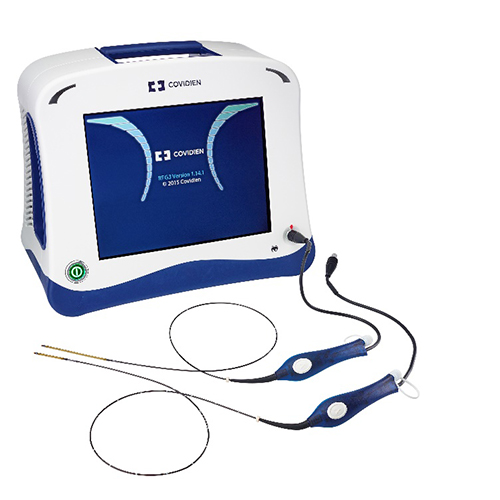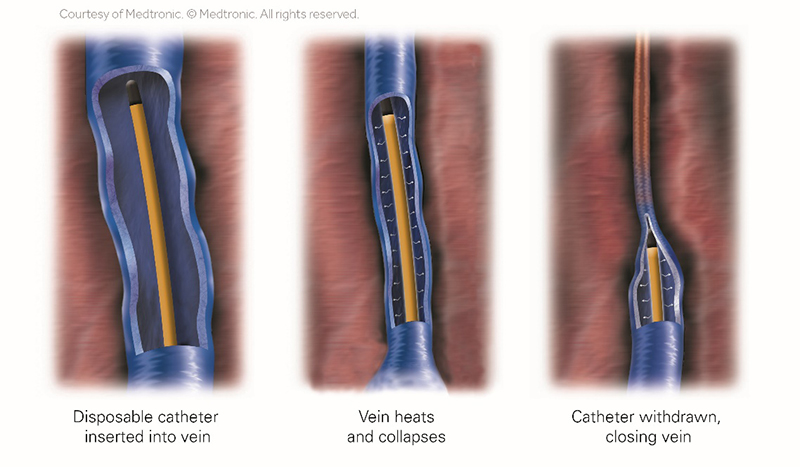Treatments
Treatments for Chronic Venous Insufficiency (CVI)
Treatment aims to improve the patient's quality of life. CVI presents a wide spectrum of severity and symptoms. Whether the patient’s desire is to cosmetically improve the appearance of one’s leg or to heal an advanced stasis ulcer, we are here to help.
There are non-surgical treatment options for CVI. These include consistent compression stocking treatment, refraining from long standing and sitting times, and leg elevation. These tend to improve symptoms but typically do not treat the source of the disease. Surgical treatment involves rerouting veins to improve blood return.
Our top-of-the-line technology targets five different techniques to yield the best results:
Radiofrequency Ablation (RFA)
Radiofrequency ablation (RFA) is an office-based minimally invasive procedure in which a diseased vein is accessed and treated using a small catheter. The procedure is sometimes called the ClosureFast™ procedure. Ultrasound is used throughout the process to ensure precision.

What to expect DURING your RFA Procedure
The treatment will take about forty-five minutes to an hour per session with one major vein treated each time. Once the leg is cleaned with a sterilizing solution, ultrasound is used to determine several landmarks along your leg and its veins. The entry site and the length of the vein are numbed using a local anesthetic. A tiny incision is made and a catheter is inserted into the diseased vein. Heat is then delivered to close the target vein. As a result, the body will now reroute through healthy veins to deliver blood back towards the heart.

What to expect AFTER your RFA Procedure
Once the procedure is completed, we will place your leg in a compression stocking. We recommend wearing this for the next several days. You will be scheduled for a follow-up ultrasound within one week of placement.
Endovenous Laser Treatment (EVLT)
Endovenous laser treatment (EVLT) is another treatment option that is minimally invasive and delivers heat to collapse the diseased veins.
What to Expect DURING an EVLT Procedure
The EVLT procedure is extremely similar to the RFA procedure. One major vein will be treated per each session of about forty-five minutes to an hour. Once the leg is cleaned with a sterilizing solution, ultrasound is used to determine several landmarks along your leg and its veins. Using a local anesthetic, the entry site will eventually be numbed. A tiny incision is made, and a catheter is inserted into the diseased vein. Heat is then delivered to the target vein. As a result, the body will reroute using healthy veins to deliver blood back towards the heart.
What to Expect AFTER an EVLT Procedure
Once the procedure is completed, we will place your leg in a compression stocking. Plan on wearing the stocking for the next several days. You will be scheduled for a follow-up ultrasound after seven days.


